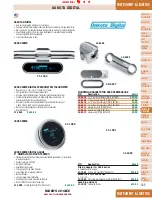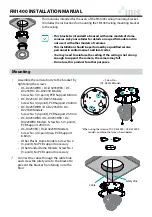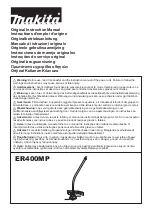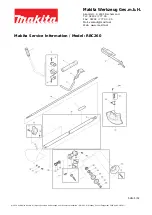
4
Part
Designation
XT1
Connector for alarm additional wire loop.
This connector may be connected to auxiliary ribbon cable of ‘dry
contact’ alarm. Ribbon cables allows its normal state setup (NC or
NO).
SA1
Reed relay
SA2
Tamper button
XР1
Not used
JMP1
JMP2
JMP3
Jumpers for changing operating modes.
Jumpers should be installed with the battery removed.
Designation of jumpers is described in Paragraph 6.
Red and green LEDs are located on the back of the RDD2 board.
The operating modes of these LEDs are described in Paragraphs 7.
6.
Designation of Jumpers
To change a device’s operating mode, remove its battery, install (remove) necessary
jumpers, and place the battery back respecting its polarity.
Installed Jumpers
Operating Mode
JMP1
Mode of addition to radio system
JMP2
Not used
JMP3
Radio channel test mode
JMP1 + JMP3
Configuration hardware reset mode
All jumpers removed
Operating mode
7.
Visual Indication
3
Operating Mode
Red
Blinks once
Device received acknowledgment
signal indicating that transmitted
alarm signal was received by control
panel
Red/Green
Alternating once per second Tamper open
Red
Blinks 2 times after 5 s
Battery depleted
3
Battery and radio channel test modes are described in Paragraph 8.


























